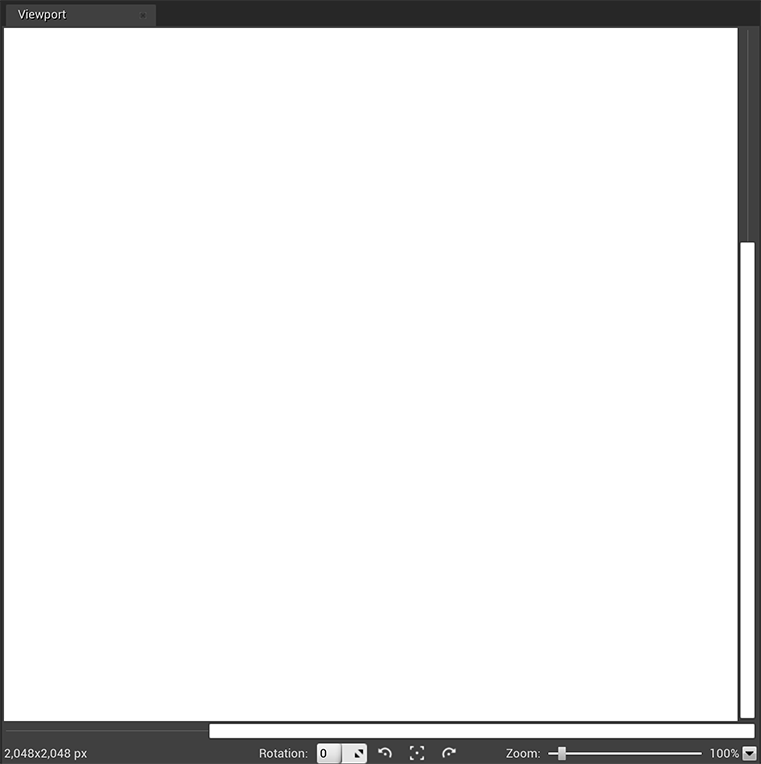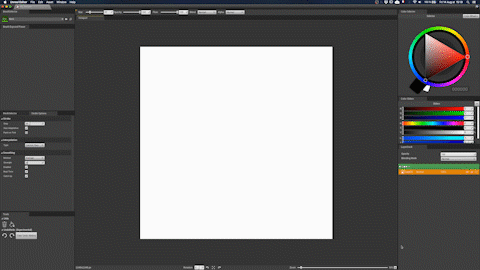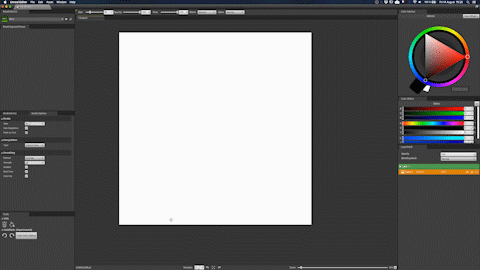Viewport (2D)¶
Whatever if you work on a Texture 2D, a Flipbook or an Animation, the Viewport will look that way:

Dimensions¶

This area shows the size (in pixels) of your image. Note that you cannot change it.
Rotation¶

This area is used to rotate your canvas. You can either enter a value (in degrees), or use the slide, or use the clockwise / counter clockwise arrows to rotate the canvas of 15°. You can also use the shortcut R to rotate your canvas with your mouse or stylus.

Zoom¶

This slider allows you to zoom in and out your canvas. You can also use the Mousewheel up and down or hold Z + LMB and move to the right to zoom in or to the left to zoom out. On Mac, zooming in / out with two fingers on the trackpad will also work.
You can also use the menu here to choose the size of your canvas in %. “Scale to fit” will automatically fit the size of your canvas to the size of the Viewport window.


Pan¶
To pan your canvas, you can use the navigation bars on the righ and at the bootom. You can also use the shortcut P.

Reset¶

This icon at the bottom resets your canvas’ angle, position and size.